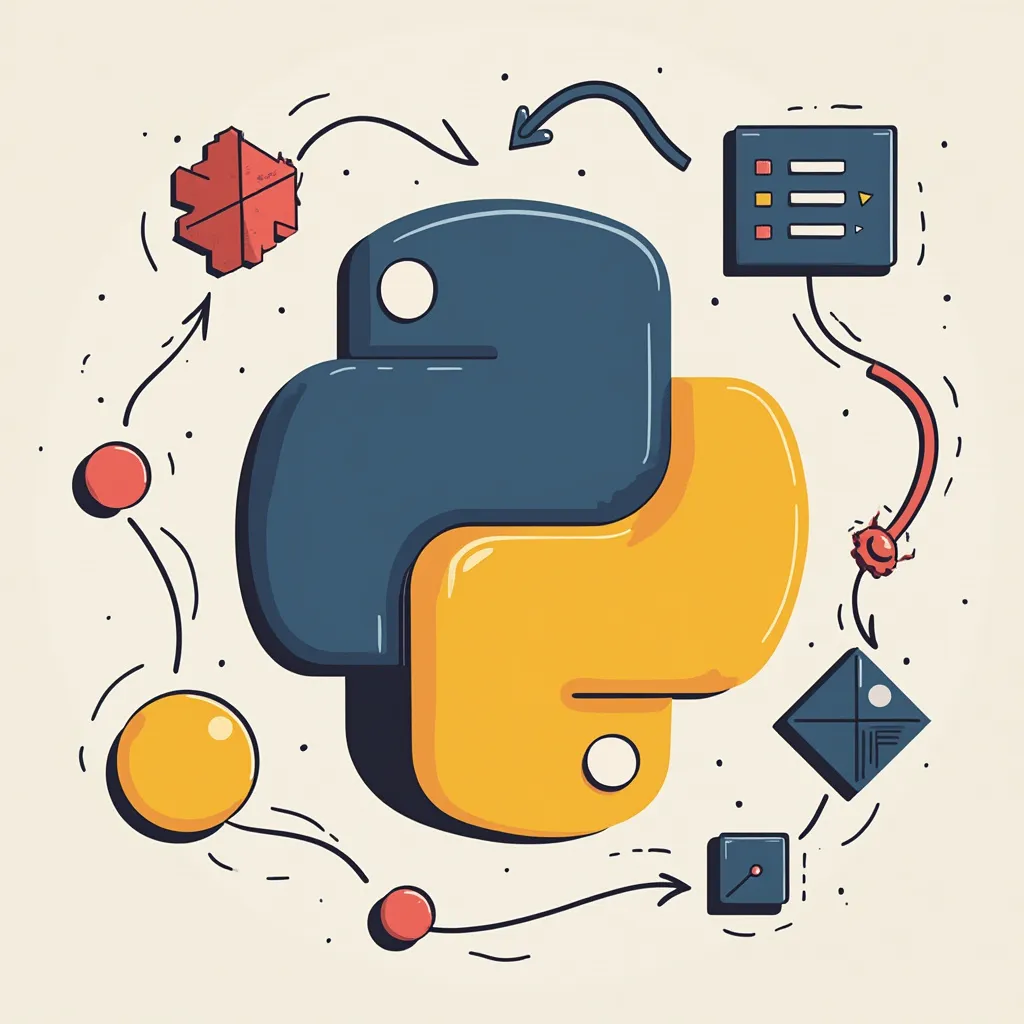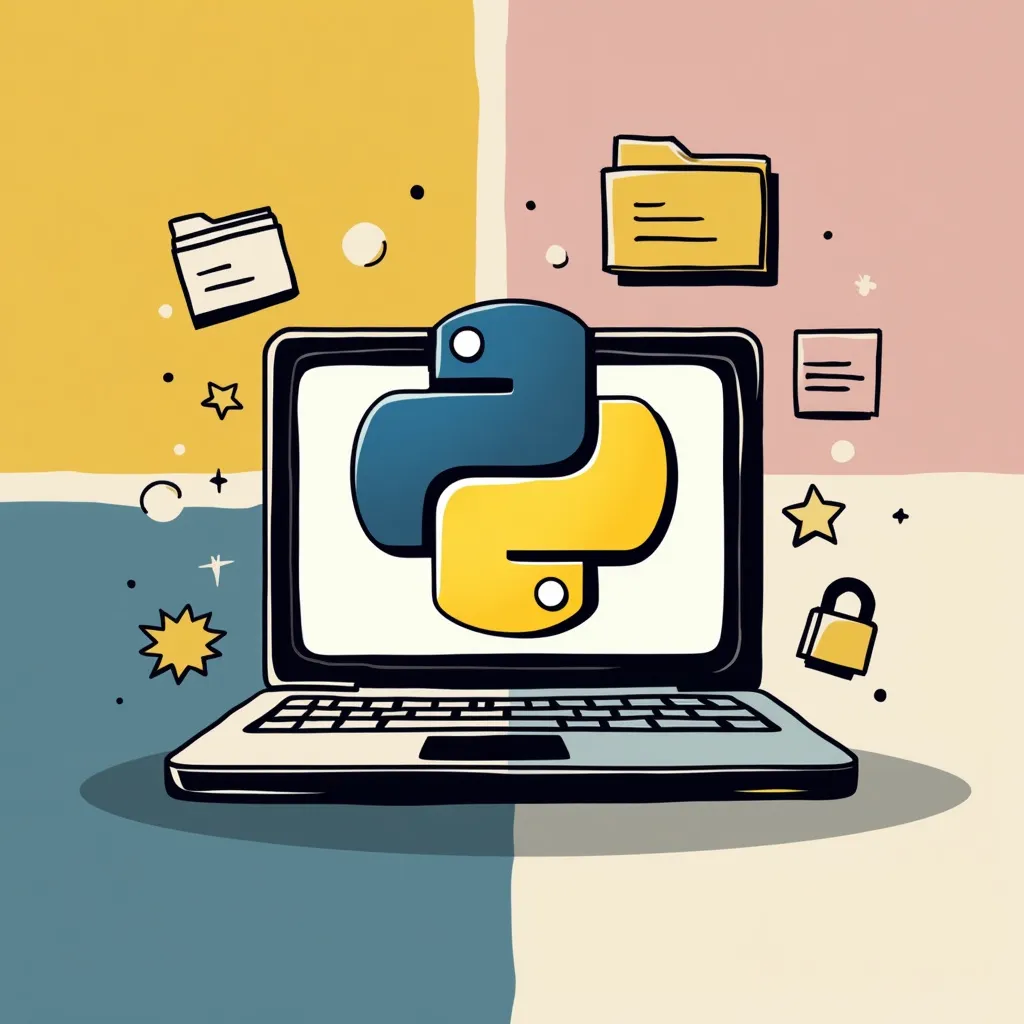
sethserver / python
Python

Mastering Python's itertools: Efficient Data Processing and Manipulation
Python
Explore Python's itertools module for efficient data processing and manipulation. Learn about iterators, generators, and key functions like cycle(), repeat(), chain(), product(), permutations(), and combinations(). Discover real-world applications and best practices for optimizing your code using itertools. read on »

Type Hinting in Python: Improving Code Clarity and Catching Bugs Early
Python
Explore Python type hinting to improve code clarity, catch bugs early, and enhance development efficiency. Learn syntax, complex annotations, benefits, best practices, and tools like mypy for static type checking in this comprehensive guide. read on »

Functional Programming in Python: Beyond List Comprehensions
Python
Explore advanced functional programming techniques in Python beyond list comprehensions. Learn about higher-order functions, lambda expressions, and practical applications using the functools module to write more elegant and efficient code. read on »

Python's Hidden Gems: Lesser-Known Built-in Functions That Will Boost Your Productivity
Python
Discover Python's hidden gems: lesser-known built-in functions that boost productivity. Learn about enumerate(), zip(), any(), all(), and more to write efficient, readable, and Pythonic code. Elevate your Python skills with these powerful yet underutilized tools. read on »

Mastering Python's Context Managers: Beyond the Basic 'with' Statement
Python
Explore Python's context managers beyond basic 'with' statements. Learn to create custom managers, handle multiple resources, and use them for timing and logging. Discover how mastering context managers can enhance your Python skills and even relate to startup management. read on »

Python's Walrus Operator: Simplifying Assignment Expressions
Python
Explore Python's walrus operator (:=), a powerful feature for simplifying code. Learn its syntax, common use cases, potential pitfalls, and best practices. Discover how this assignment expression can enhance readability and efficiency in various programming scenarios, from data processing to game development. read on »

Python Environment Setup Guide: Best Practices for Virtual Environments and Dependencies
Python
Python is an amazing language and it's easy to get started. However, there are a few things you should do to ensure your environment is setup properly. read on »

Why is Python So Popular Despite Being Slow? | Python Performance Explained
Python
Let me reframe this question using different technology. Why are Toyota Corollas so popular despite being so slow? They're obviously much slower than rocket powered aircraft! Things just got crazy, right? Let's do some math to prove our point about how slow Toyota Corollas really are when compared to rockets. read on »

Python KeyError: How to Avoid and Handle Dictionary Exceptions
Python
When working with Python dictionaries you'll find yourself needing to access a key that may or may not exist. The easiest way to do this is with the get() method. read on »

Python For Loops Explained: Iteration, Scoping, and Generators
Python
Python has some pretty amazing features, and one of its most powerful and versatile is the for loop. As you can see by the examples below the for loop in Python is quite powerful when used in conjunction with... read on »

Generate a Strong Random Password in Python: Secure Method
Python
The conciseness of the Python language paird with its easy-to-use REPL make it ideal to hack out quick and easy scripts. One thing you can do is quickly and securely generate a random password with practically one line of code. read on »

Fix a Broken Python Environment: Troubleshooting Guide | SethServer
Python
If you've spent any time working with Python environments you're bound to have run into errors such as pip: command not found, No module named pip, ModuleNotFoundError: No module named 'distutils.util', or other Python 2.x vs Python 3.x issues. read on »

How to Tell if a File Exists in Python
Python
Python helps make a lot of things really easy. The conciseness of the language make it awesome to accomplish simple tasks in as few lines as possible. One of these simple tasks is checking to see if a file exists. read on »

Python Logging: Why Logger Defaults to WARN and How to Change It
Python
When debugging and profiling Python software you'll find yourself relying on Python's built-in logging module. Something that is very simple to overlook is the fact that the root logger defaults to WARN and not DEBUG. read on »

Python: How to Read a File Line by Line - Efficient File Parsing
Python
When using Python for Data Science or general Programming you'll find yourself needing to read and parse very very very large files. The easiest way to accomplish this is by iterating over the actual file object. read on »

Python: Recursively List All Files in a Directory - Efficient File Traversal Guide
Python
When using Python for Data Science or general Systems Administration you'll find yourself needing to recursively read a directory tree, remember all (or some) of the files in the directories and then do something fun with those files. read on »

Python Secret Santa Gift Exchange: Optimize Matches with pyge
Python
My wife is in charge of our families' annual Secret Santa Gift Exchange. Because she, unfortunately, knows about my background in math and computer science her requirements have become more extreme. read on »

Fix Python TypeError: Object is Not JSON Serializable [Easy Guide]
Python
When working with Python dictionaries you'll find yourself needing to access a key that may or may not exist. The easiest way to do this is with the get() method. read on »

Master Python Slice Notation: The Easy Way [Guide + Examples]
Python
In my mind the easiest way to understand Python's slice notation is to visualize it with real examples. Once you get it under your fingers you'll find list slicing is an invaluable tool to have in your Python toolkit. read on »